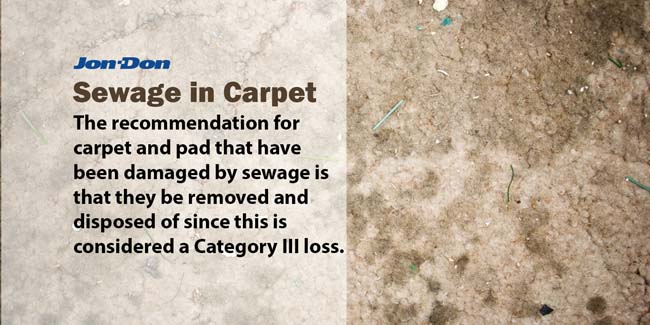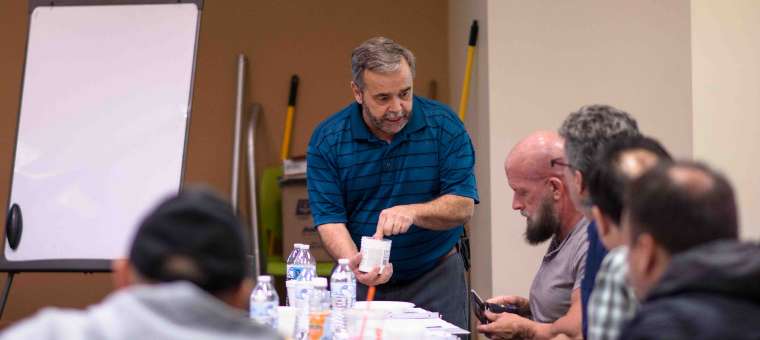
How to Treat Sewage in Carpet
When a carpet and pad has been contaminated due to sewage from a backup or flooding, typically it is recommended that it be removed and disposed of since this is considered a Category 3 loss. However, in some cases, highly valued rugs may be salvageable through specialized in-plant cleaning processes. In the case of carpet and pad, damaged areas should be treated with an antimicrobial and then be bagged for removal from the environment.
Sewage damage is the most dangerous form of water cleanup due to the high possibility of blood-borne pathogens and other contaminants. Below are the recommended steps for handling sewage cleanup. It is strongly encouraged that a technician take classes such as IICRC Water Restoration Tech (WRT) BEFORE attempting this kind of water damage cleanup.
How to Clean Sewage Backup in Carpet
Here are the basic steps for managing carpet and rugs after a sewage incident:
- Evacuation and Safety: Advise any occupants to leave/evacuate the space to minimize health risks. Carefully inspect the environment for potential hazards, including electricity and other safety or health risks.
- Personal Protective Equipment (PPE): It's crucial that each technician uses proper personal protective equipment. This includes Tyvek coveralls, exam gloves and/or leather gloves, goggles, and a 3M-R6800 respirator with a 3M-CA2097 filter. Rubber boots should also be worn over the top of coveralls to ensure complete protection.
- Source and Containment: Identify, repair, and/or eliminate the source of the sewage and water. Containment may need to be set up to limit the risk of secondary damage to unaffected areas of the location. This is critical in preventing the spread of contaminants to other parts of the building.
- Sewage Removal: Pump out the water and sewage, checking with local municipalities to identify any restrictions concerning the disposal of these materials.
- Material Assessment and Initial Cleaning: Determine if materials like carpets can be decontaminated or if they must be removed and replaced. Use a pump-up sprayer to apply MediClean® Disinfectant Spray Plus to all affected areas to treat dangerous bacteria. Check other systems, such as HVAC, for damage and determine what cleaning and repairs will be necessary.
- Removal of Contaminated Materials: Remove all unsalvageable materials from the space, including carpet, pad, affected drywall, and other contaminated items. Exercise caution to ensure that cross-contamination does not occur. Treat all salvageable items that will remain with MediClean® Disinfectant Spray Plus and complete a thorough cleaning.
- Treating Hard Surfaces: Hard surface items such as subflooring, joists, and studs should be treated with a preventative coating like Foster’s 40-51 Fungal Protector.
- Repair and Reinstallation: Repair and reinstall items and areas that have been cleaned and sealed.
Need more help?
For additional assistance or help choosing the right products for sewage damage cleanup, call a Jon-Don restoration expert at 1-800-556-6366.



